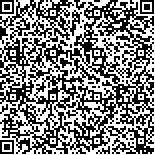|
|
| |
|
|
| 本文已被:浏览 234次 下载 319次 |

码上扫一扫! |
|
|
| “醒脑开窍”针刺法对老年卒中相关性肺炎发病影响的巢式病例对照研究 |
|
肖璐1, 许欣宜1, 缪长宏1, 吴芳颖2, 宋艳兴1, 李桂伟1, 石存忠1
|
|
1.天津中医药大学第一附属医院急症部, 国家中医针灸临床医学研究中心, 天津 300381;2.浙江中医药大学第二临床医学院, 杭州 310000
|
|
| 摘要: |
| [目的] 探讨真实环境下”醒脑开窍”针刺法对老年急性脑梗死(ACI)患者卒中相关性肺炎(SAP)发生率的影响。[方法] 在ACI队列研究基础上,采用巢式病例对照研究方法,经倾向性匹配评分(PSM)均衡混杂因素,匹配因素包括美国国立卫生研究院卒中量表(NIHSS)以及吞咽困难,设置卡钳值为0.01,按照1∶4的比例进行匹配。随后利用Logistic回归分析针灸对老年SAP的发病影响,分析中医证型对SAP的发病影响及针灸对不同证型ACI患者SAP的发病影响。[结果] 研究最终选取病例组48例、对照组155例患者进入研究,使用“醒脑开窍”针刺法后老年SAP发病风险降低至76%(i>P<0.001)。多因素Logistic回归分析发现,在60~69、70~79、≥80岁年龄段中,“醒脑开窍”针刺法均是影响SAP发生的显著因素;“醒脑开窍”针刺法可以显著降低阴虚风动证ACI患者SAP的发病率[OR=0.12,95%CI(0.05,0.25),P<0.0001]。此外,无论ACI患者是否发生昏迷[基于格拉斯哥昏迷评分法(GCS)评分定义],”醒脑开窍”针刺法均可以减少SAP的发生。[结论] “醒脑开窍”针刺法可以降低ACI患者SAP的发生率,尤其是对阴虚风动证患者更为明显,预防效果尚需要进一步前瞻性研究加以证实。 |
| 关键词: 卒中相关性肺炎 “醒脑开窍”针刺法 巢式病例对照研究 倾向性评分 |
| DOI:10.11656/j.issn.1673-9043.2024.07.04 |
| 分类号:R245.3 |
| 基金项目:天津市卫生健康委员会中医中西医结合课题(2021046,2023070)。 |
|
| Nested case-control study on the impact of “Xingnao Kaiqiao” acupuncture on the incidence of stroke-associated pneumonia in elderly patients |
|
XIAO Lu1, XU Xinyi1, MIAO Changhong1, WU Fangying2, SONG Yanxing1, LI Guiwei1, SHI Cunzhong1
|
|
1.Emergency Department, National Clinical Research Center for Chinese Medicine Acupuncture and Moxibustion, First Teaching Hospital of Tianjin University of Traditional Chinese Medicine, Tianjin 300381, China;2.The Second School of Clinical Medicine, Zhejiang Chinese Medical University, Hangzhou 310000, China
|
| Abstract: |
| [Objective] To investigate the impact of “Xingnao Kaiqiao” acupuncture on the incidence of stroke-associated pneumonia(SAP) in elderly patients with acute cerebral infarction(ACI) in a real-world setting. [Methods] Using a nested case-control study design based on the ACI cohort,propensity score matching(PSM) was employed to balance confounding factors. Matching factors included the National Institutes of Health Stroke Scale(NIHSS) and swallowing difficulties,with a caliper set at 0.01. After successful matching in a 1∶4 ratio,a final cohort of 48 cases and 155 controls was established for the analysis of acupuncture’s impact on the onset of stroke-associated pneumonia(SAP) in elderly ACI patients. Subsequently,logistic regression analysis was employed to investigate the impact of acupuncture on the onset of SAP in the elderly. The analysis also examined the influence of traditional Chinese medicine(TCM) syndrome differentiation on the onset of SAP,as well as the effects of acupuncture on the onset of SAP in ACI patients with different TCM syndromes. [Results] In the end,the study included 48 cases in the experimental group and 155 controls for analysis. After using the “Xingnao Kaiqiao” acupuncture method,the risk of SAP in the elderly decreased by 76%(P<0.001). Furthermore,using multifactor logistic regression analysis,it was found that in the three age groups of 60~69,70~79 and ≥80 years old,the “Xingnao Kaiqiao” acupuncture method was a significant factor influencing the occurrence of SAP. The “Xingnao Kaiqiao” acupuncture method significantly reduces the occurrence of SAP in ACI patients with the syndrome of “Yinxu Fengdong”[OR=0.12,95%CI(0.05,0.25),P<0.000 1]. Additionally,regardless of whether ACI patients were comatose(based on GCS scores),the “Xingnao Kaiqiao” acupuncture method could reduce the occurrence of SAP. [Conclusion] “Xingnao Kaiqiao” acupuncture can influence the occurrence of SAP in ACI patients,especially in ACI patients with “Yinxu Fengdong” syndrome. The preventive effect needs further confirmation through prospective studies. |
| Key words: stroke-associated pneumonia “Xingnao Kaiqiao” acupuncture nested case-control study propensity score matching |
|
